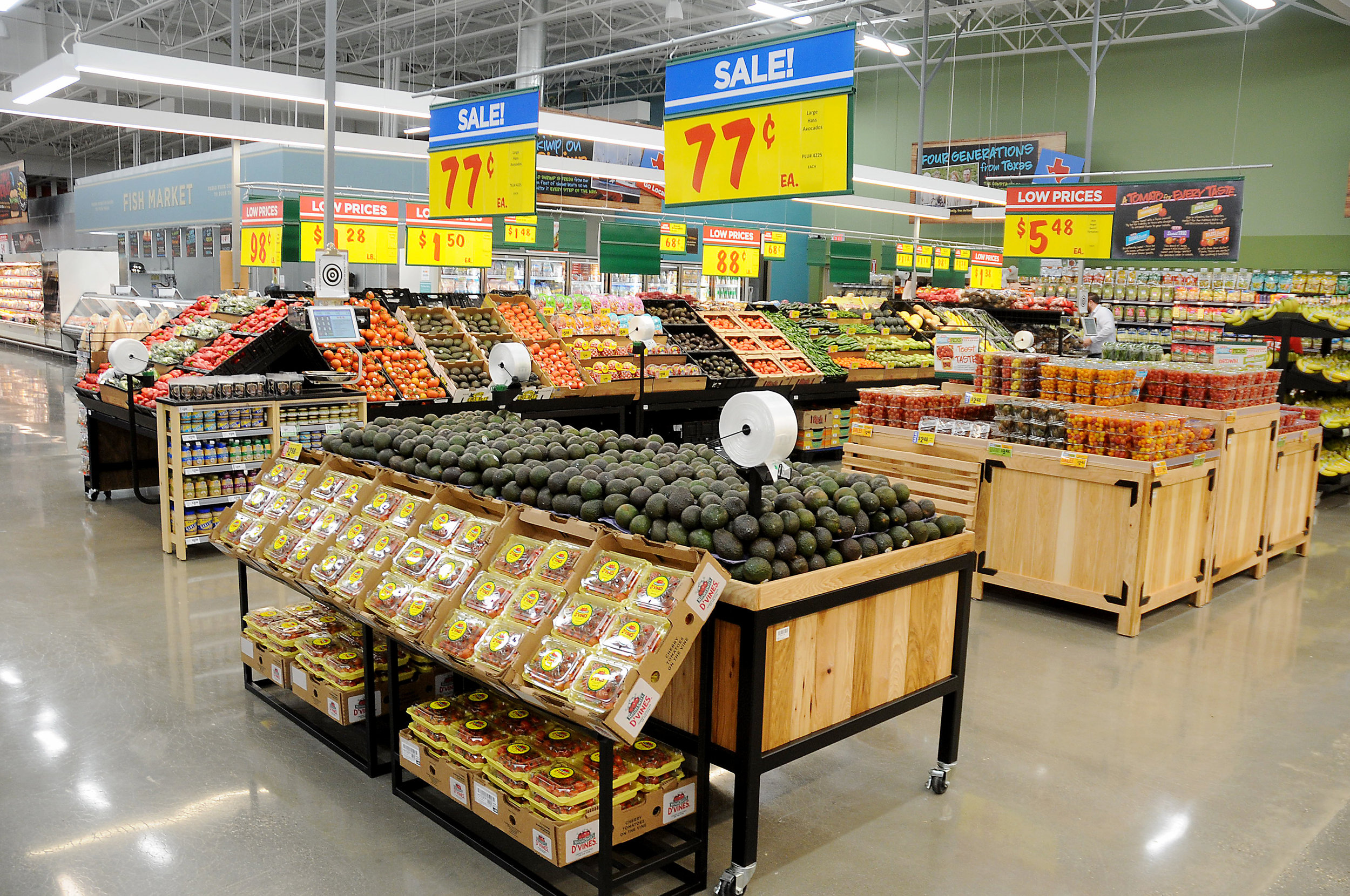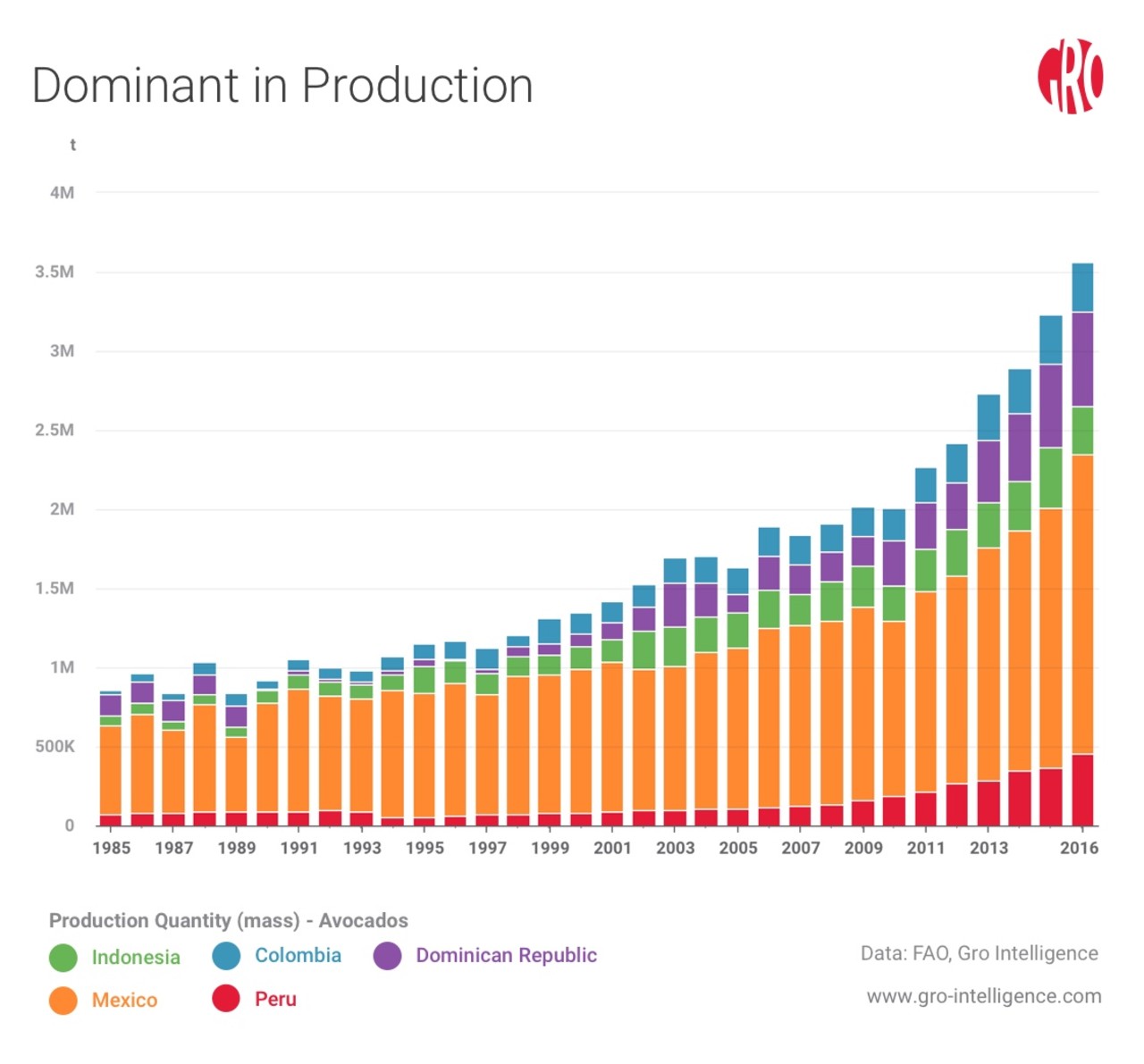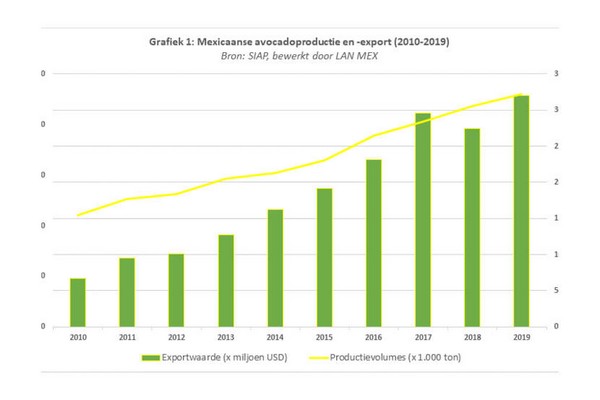Depending on where you go guacamole can have an endless amount of additives like lime or jalapeno. We all know there is one ingredient that we must have in order to make a good bowl of guacamole, the avocado. In America we grab them off the shelves at our local grocery store (HEB for the Texans) and never think about where they’re sourced, who grows them or even how they get to the store.
Production
A staggering amount of our avocados in America come from one specific region in….yes you guessed it Mexico. The region of Michoacan accounts for a staggering 87 percent of our avocado imports. The lack of knowledge we have regarding the growing and distribution of avocados is significant and so is the environmental and social costs the region undergoes to supply these fruits to us. The toll this sourcing has taken on the region is evident in the deforestation that is now affecting the reservoirs for monarch butterflies who are a huge source of biodiversity. An estimated 20 percent of the deforestation in Michoacan can be attributed to the expansion of avocado plantations in the area.
The process of production and distribution of any food is completely unknown to the average consumer. To explain the process on an approachable and summarized level it goes as follows. Avocados are grown and harvested by local farms in Michoacan, when the avocado is ready to harvest the growers in the region are contacted by packers who are in competition to sell the avocados to the highest bidding company. After this process the winners amongst the bidders will transport their avocados to their pack houses. In some cases packers will also facilitate the export but in the majority of cases the packer will outsource to an independent exporting company. By this point refrigerated trucks holding our pre- guacamole avocados will be driven to ports of inspection by the USDA. When they are approved they will be transported to importers, and finally distribution centers send the avocados to retailers like HEB and Walmart for national distribution.
History
Although we now have a model that steadily supplies these fruits it has not always been that way. The production and importation of avocados from Mexico has largely been a politically charged trade. The Mexican-American avocado trade was banned in 1914 lasting all the way until 1997 , as a result we have new regulations from the Association of Producers and Packers Exporters of Avocados in Mexico (APEAM). Under these new regulations a new pathway for Michoacan was formed, leading to the region becoming the only Mexican state to export avocados to the U.S. “Why is Michoacan a great place to grow avocados one may ask?” geographically avocados in Michoacan thrive in the sandy soil in addition great drainage allows farmers to limit fungus that impedes the growth of avocados.
Modern Demand
The growing demand for avocados has emerged as health benefits meet a growing need for health friendly natural foods. Avocados are known for their high nutritional value and potential health benefits stemming from the high fat content and proteins compared to other fruits. The increased demand for nutritional snacks and meals like avocados come at a time with prevailing patterns of obesity in the U.S. Statistics show nearly 40 percent of Americans being classified as obese. The caloric surplus and health benefits of avocados have displayed statistics showing that those who consumed avocado actually have lower likelihood of remaining overweight or obese during a follow up exam. Avocados and guacamole reached national headlines in 2015 as Chipotle who was named the second fastest growing food chain in the nation, received media attention with the outbreak of e-coli in their naturally sourced products.
Recipe
Now if by now you have not scrolled past all the formal information to get to the recipe here it is. Warning that this recipe is admittedly not mine or my families but it is the recipe of Texas native Lance Armstrong’s mother.
- 3 ripe avocados
- 1 Tbsp. grated white onion
- 1 1/2 Tbsp. picante sauce
- Squeeze of fresh lemon
- Pinch of garlic salt
- Peel avocados and remove seeds.
- Scoop avocados into a large bowl; with fork, coarsely mash.
- Stir in remaining ingredients until blended.
- Make 2 cups.
Citations
Cho, K., Goldstein, B., Gounaridis, D., and Newell, J. P. (2021). Where does your guacamole come from? Detecting deforestation associated with the export of avocados from Mexico to the United States. Journal of Environmental Management, 278(Pt 1), 111482–. https://doi.org/10.1016/j.jenvman.2020.111482
Araújo, R. G., Rodriguez-Jasso, R. M., Ruiz, H. A., Pintado, M. M. E., and Aguilar, C. N. (2018). Avocado by-products: Nutritional and functional properties. Trends in Food Science & Technology, 80, 51–60. https://doi.org/10.1016/j.tifs.2018.07.027
Heskey, C., Oda, K., and Sabaté, J. (2019). Avocado Intake, and Longitudinal Weight and Body Mass Index Changes in an Adult Cohort. Nutrients, 11(3), 691–. https://doi.org/10.3390/nu11030691
Brummette, J., and Fussell Sisco, H. (2018). Holy guacamole! Framing and the Chipotle contamination issue. Journal of Communication Management (London, England), 22(3), 280–295. https://doi.org/10.1108/JCOM-08-2017-0085
Lance Armstrong’s mom’s Texas Guacamole.(CELEB DISH). (2008). Good Housekeeping (U.S. Ed.), 246(5), 68–.
Derrick Cardenas







